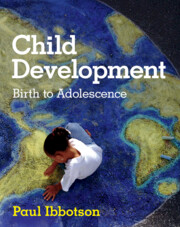Refine search
Actions for selected content:
319 results
6 - From Takasago’s Past to Taiwan’s History
-
- Book:
- Negotiating Imperialism
- Published online:
- 08 November 2025
- Print publication:
- 20 November 2025, pp 192-225
-
- Chapter
-
- You have access
- Open access
- HTML
- Export citation
Romance as a Method, Enjoyment as Empiricism
- Part of
-
- Journal:
- Public Humanities / Volume 1 / 2025
- Published online by Cambridge University Press:
- 24 October 2025, e150
-
- Article
-
- You have access
- Open access
- HTML
- Export citation
3 - Possession and Enslavement through the Holy Spirit
-
- Book:
- God, Slavery, and Early Christianity
- Published online:
- 19 September 2025
- Print publication:
- 09 October 2025, pp 131-165
-
- Chapter
- Export citation
Chapter 10 - Anthropology and the Deaf and Dumb
- from Part II - Historical and Philosophical Implications
-
-
- Book:
- Kant on Language
- Published online:
- 19 September 2025
- Print publication:
- 09 October 2025, pp 178-196
-
- Chapter
- Export citation
4 - Enslaved Surveillance and Spirit–Flesh Symbiosis
-
- Book:
- God, Slavery, and Early Christianity
- Published online:
- 19 September 2025
- Print publication:
- 09 October 2025, pp 166-199
-
- Chapter
- Export citation
21 - Liturgy as Ritual (and Prayer)
- from Part V - The Study of Liturgy
-
-
- Book:
- The Cambridge Companion to Christian Liturgy
- Published online:
- 19 September 2025
- Print publication:
- 09 October 2025, pp 369-388
-
- Chapter
- Export citation
1 - Skirmishes
-
- Book:
- The War on Tenure
- Published online:
- 30 September 2025
- Print publication:
- 30 September 2025, pp 1-8
-
- Chapter
- Export citation
2 - Shepherd
- from Part One - Getting to Tenure
-
- Book:
- The War on Tenure
- Published online:
- 30 September 2025
- Print publication:
- 30 September 2025, pp 11-15
-
- Chapter
- Export citation
Cooperation in Polarized Legislatures: Learning from the Case of the Texas State House of Representatives
-
- Journal:
- State Politics & Policy Quarterly / Volume 25 / Issue 4 / December 2025
- Published online by Cambridge University Press:
- 19 September 2025, pp. 464-488
- Print publication:
- December 2025
-
- Article
-
- You have access
- Open access
- HTML
- Export citation
Psychiatrists, Penguins and Pelicans: media psychiatrists and psychiatrists in the media – CORRIGENDUM
-
- Journal:
- BJPsych Bulletin , FirstView
- Published online by Cambridge University Press:
- 26 August 2025, p. 1
-
- Article
-
- You have access
- Open access
- HTML
- Export citation
8 - What Can Be Learnt from Global Traditions of Oracy?
- from Part II - Oracy in Global Context
-
-
- Book:
- Oracy
- Published online:
- 23 September 2025
- Print publication:
- 31 July 2025, pp 104-115
-
- Chapter
- Export citation
Confronting the material and structural leakiness of plastics: insights from multi-sited ethnography in India, Indonesia and the Philippines
-
- Journal:
- Cambridge Prisms: Plastics / Volume 3 / 2025
- Published online by Cambridge University Press:
- 30 July 2025, e27
-
- Article
-
- You have access
- Open access
- HTML
- Export citation
Why psychiatry needs ethnography
-
- Journal:
- The British Journal of Psychiatry / Volume 227 / Issue 4 / October 2025
- Published online by Cambridge University Press:
- 23 July 2025, pp. 664-666
- Print publication:
- October 2025
-
- Article
-
- You have access
- Open access
- HTML
- Export citation
Psychiatrists, Penguins and Pelicans: media psychiatrists and psychiatrists in the media
-
- Journal:
- BJPsych Bulletin , FirstView
- Published online by Cambridge University Press:
- 21 July 2025, pp. 1-5
-
- Article
-
- You have access
- Open access
- HTML
- Export citation
Chapter 7 - Multidisciplinarity in Psychiatry
- from Part II - The Present and the Future
-
-
- Book:
- Values in Psychiatry
- Published online:
- 24 June 2025
- Print publication:
- 10 July 2025, pp 106-123
-
- Chapter
- Export citation
Subjective selection, super-attractors, and the origins of the cultural manifold
-
- Journal:
- Behavioral and Brain Sciences / Accepted manuscript
- Published online by Cambridge University Press:
- 01 July 2025, pp. 1-59
-
- Article
-
- You have access
- Export citation
Dark Emu and Indigenous Studies
- Part of
-
- Journal:
- Public Humanities / Volume 1 / 2025
- Published online by Cambridge University Press:
- 27 June 2025, e109
-
- Article
-
- You have access
- Open access
- HTML
- Export citation

Child Development
- Birth to Adolescence
-
- Published online:
- 19 June 2025
- Print publication:
- 12 June 2025
-
- Textbook
- Export citation
8 - Sermons on the Ascension and Pentecost
- from Part II - Augustine’s Sermons on the Scriptures and Liturgical Feasts
-
-
- Book:
- The Cambridge Companion to Augustine's Sermons
- Published online:
- 26 May 2025
- Print publication:
- 12 June 2025, pp 152-168
-
- Chapter
- Export citation
Mediating practices in theory and action: apprehending and creating interdisciplinary data in biosocial birth cohort research
-
- Journal:
- Journal of Biosocial Science , First View
- Published online by Cambridge University Press:
- 26 May 2025, pp. 1-10
-
- Article
-
- You have access
- Open access
- HTML
- Export citation
